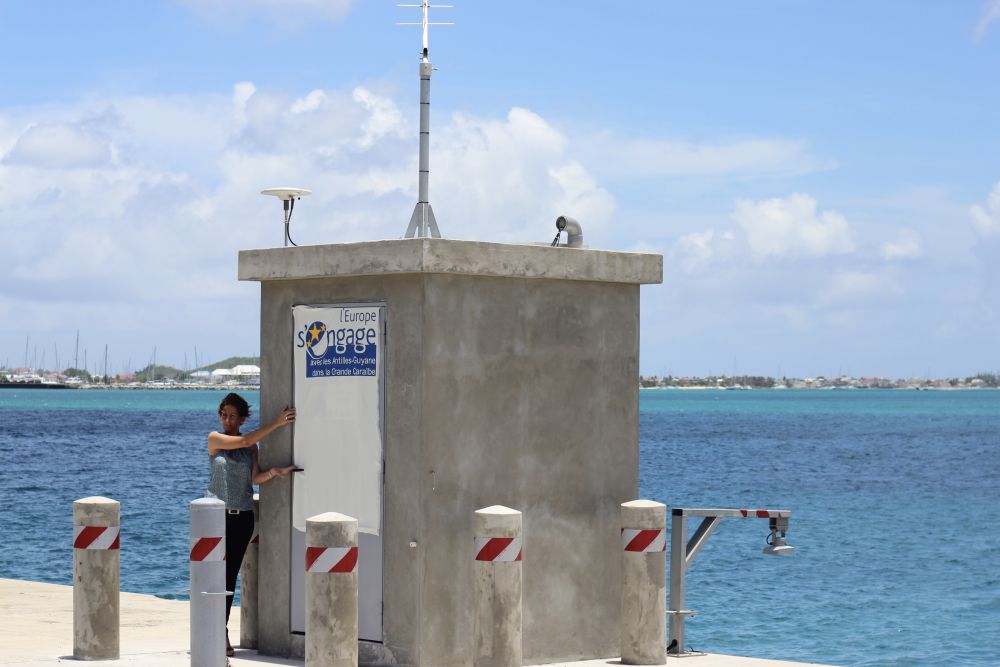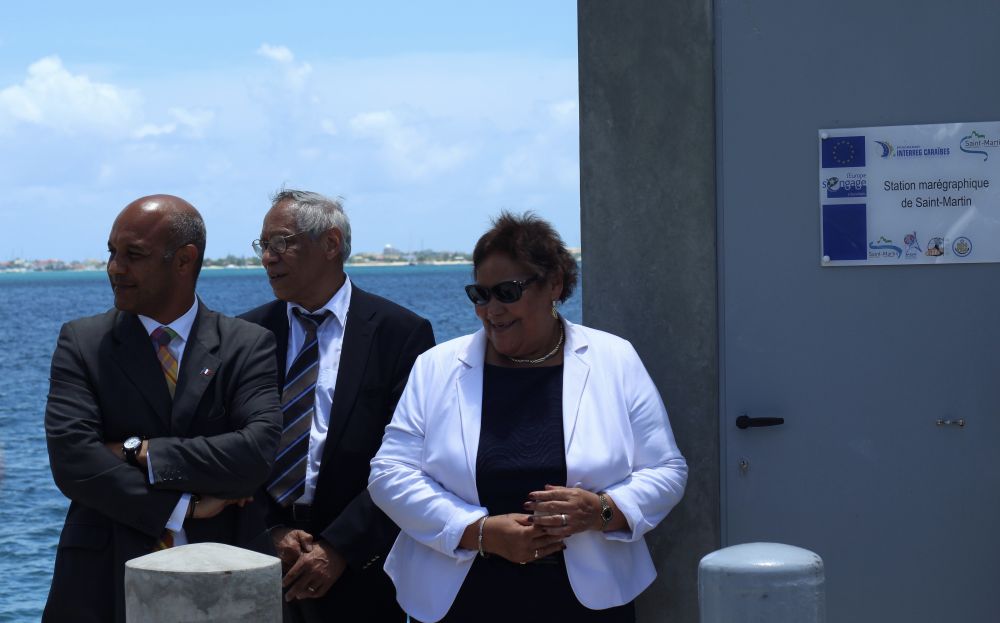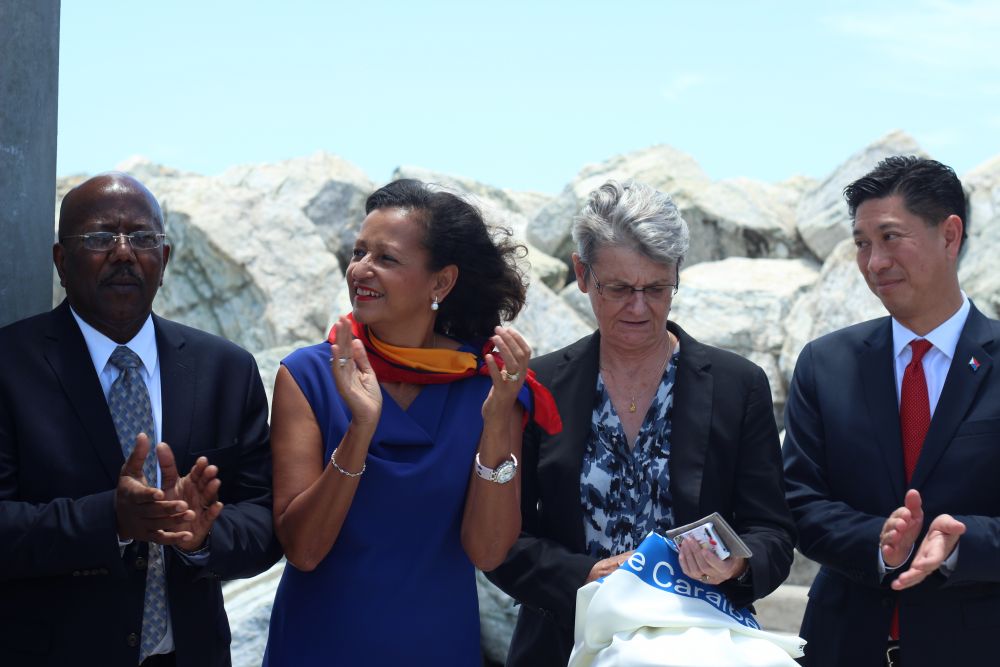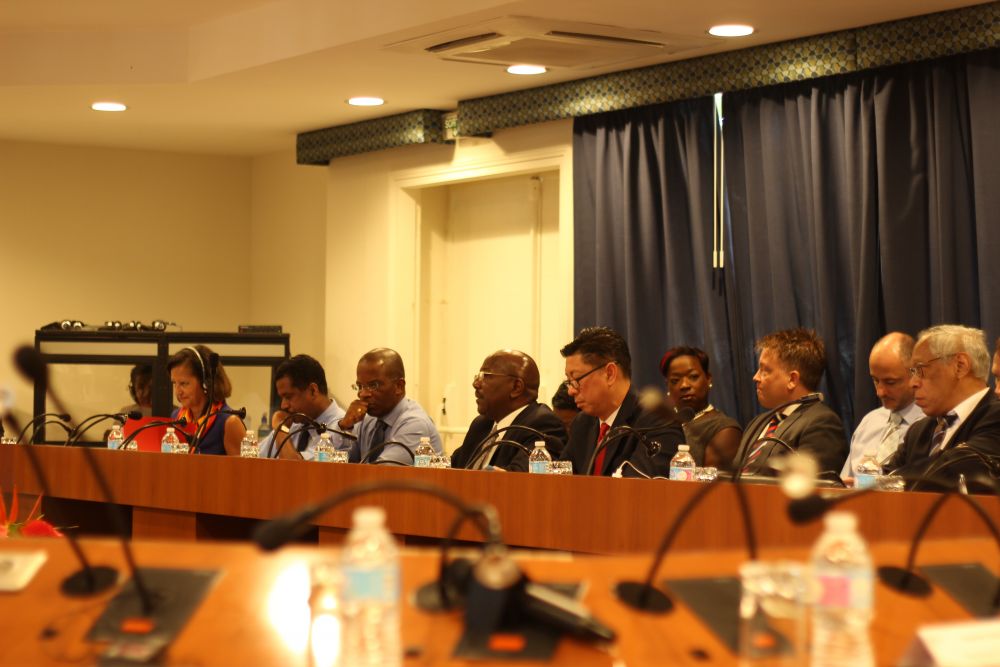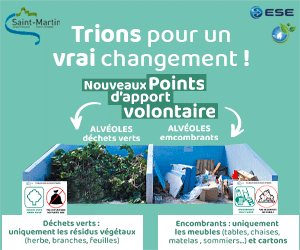Inauguration of the tide gauge station
On Thursday morning, the various technicians concerned came to present the projects completed on the island of Saint-Martin as part of the 2007-2013 Caribbean IV INTERREG Program. Chaired by Aline Hanson, this meeting which was held in the middle of the "beautiful month of Europe", included not only the delegate prefect Anne Laubies, but also, among others, William Marlin the Prime Minister of St. Maarten accompanied by Emil Lee, the Minister of Health, Labor and Social Affairs, as well as Marie-Luce Penchard, 2nd vice-president of the Regional Council of Guadeloupe which steers the Caribbean INTERREG Program.
In her opening speech, the president of the Collectivité paid tribute to the three ”important achievements” which allowed us to ”to catch up with the structural underdevelopment that has accumulated for the last twenty years”. These achievements consist in three long-term cooperation projects, submitted respectively by Dr. Louis Jeffry, Patrick Lentz and an engineer from the company SAFEG, and Charlotte Terrac (mission head for "major risks management" at the Collectivité).
- The creation of a Health Observatorydone in cooperation with St. Maarten and inaugurated in 2014, has helped to carry out field surveys and should soon provide data on the island’s population. This project benefited from an ERDF grant of more than 558,000€ for a total cost of 771,701€.
- The studies for the development of the Belle Plaine basin to particularly fight against floods in French Quarter cost 1.4 million euros and benefited from 1.1 million euros of INTERREG funding. This project was also carried out in cooperation with St Maarten. The Belle Plaine basin is located between the Dutch and French sides. In this area, the gullies collect the rain waters and discharge them in the low part, meaning in French Quarter, where the population density is high. This project has a double challenge: reduce the vulnerability of homes, and contribute to economic development by securing the area. The idea is therefore to produce facilities for redirecting waters and for retaining water in low-risk areas. The cost of the work is estimated at 15 million euros.
- The establishment of a tide gauge station to strengthen tsunami and sea flooding risk prevention capabilities for the region benefited from 75,000€ of ERDF subsidies, for a total cost estimated at 100,000€. Perfectly autonomous, this station located at the end of the Galisbay commercial port, uses solar panels. This project was carried out in cooperation with Saint-Barthélemy which will soon open one in the Gustavia Port. The tide gauge improves the warning system in the event of a tsunami risk and monitors the rise in sea level. Data is gathered thanks to a double system which can collect the same type of data, in two different ways. A radar placed above the surface measures the height of the water by calculating the time elapsed during the reflection of the wave that it emits. A pressure sensor placed at the bottom of the water measures the height of the water column by the pressure which is applied above it. This data is transmitted in real time on the GOES satellite which forwards it to the tsunami service providers. This data is also transmitted in real time via 3G in order to be interpreted and analyzed by the scientific partners (OVS/IPGP, SHOM, IGN). A GPS is placed on the station whose data is visible, among other sources, on the website Sonel.org and IOC-SEALEVELmonitoring. The prime minister of St. Maarten announced that other stations would soon be added in St. Maarten (Pointe Blanche and Simpson Bay).
The meeting was closed by the inauguration of the tide gauge station.



